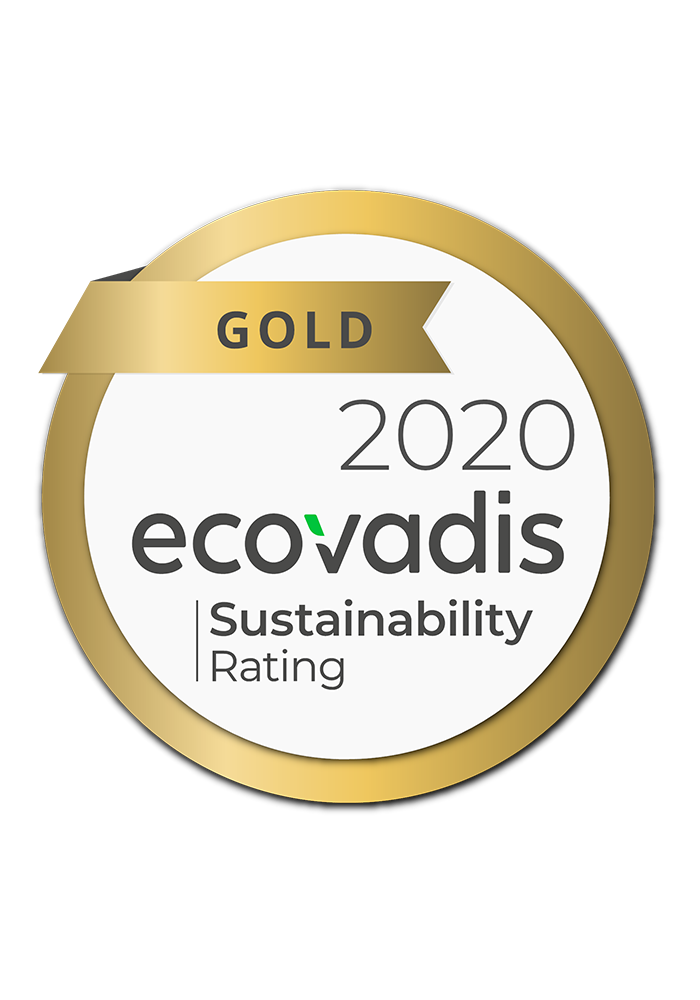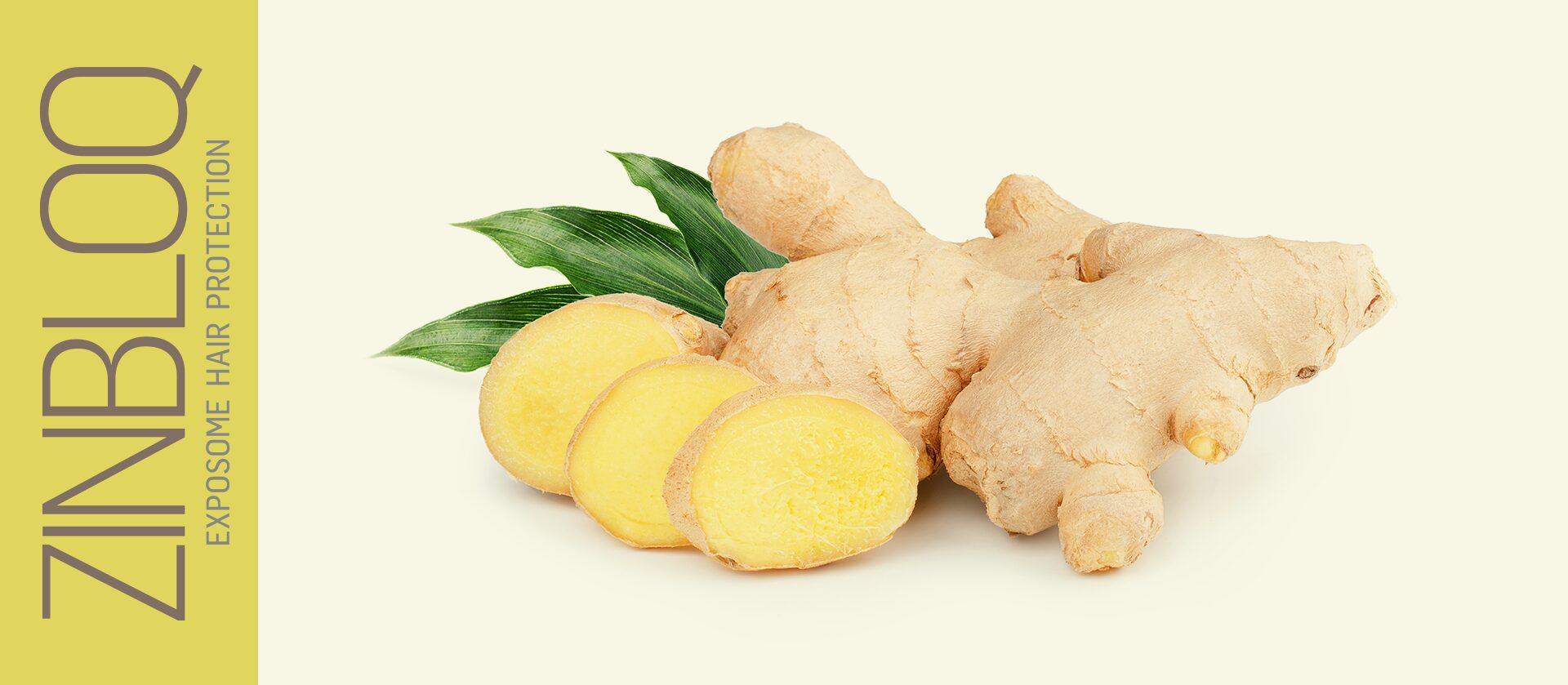
What is ZinBloq?
ZinBloq protects hair from environmental damage by preserving the cuticle and reducing oxidative stress for stronger, healthier hair.
- Keeps hair shiny
- Improves combability
- Protects the hair strands from erosion
- Reduces visible signs of aging.
Benefits
“Well-aging hair”
- Protects hair cuticle
- Maintains lipid surface integrity
- Preserves the cortex
- Increases hair gloss
- Detangles hair
INCI NAME
Zingiber officinale (Ginger) Root Extract, Kappaphycus Alvarezii Extract, Algin, Sodium Benzoate and Potassium Sorbate.
What is exposome?
The term exposome describes the totality of exposures to which an individual is subjected from conception to death. It includes both external and internal factors, as well as the human body’s response to these factors.
Exposome & hair
Cuticle damaged
- Loss of cortex protection
- Loss of combability and entanglement
- Loss of gloss
Hair and natural defenses
Unlike skin, hair has no natural defenses against free radicals, making it vulnerable to oxidative damage like UV radiation, urban pollution, cigarette smoke, temperature and moisture. Aging hair is also vulnerable to oxidative stress and structural changes like unprotected cuticles, compromised lipid surfaces, defenseless cortex, lack of shine and difficulty combing.
Mechanism of action
Selected raw materials
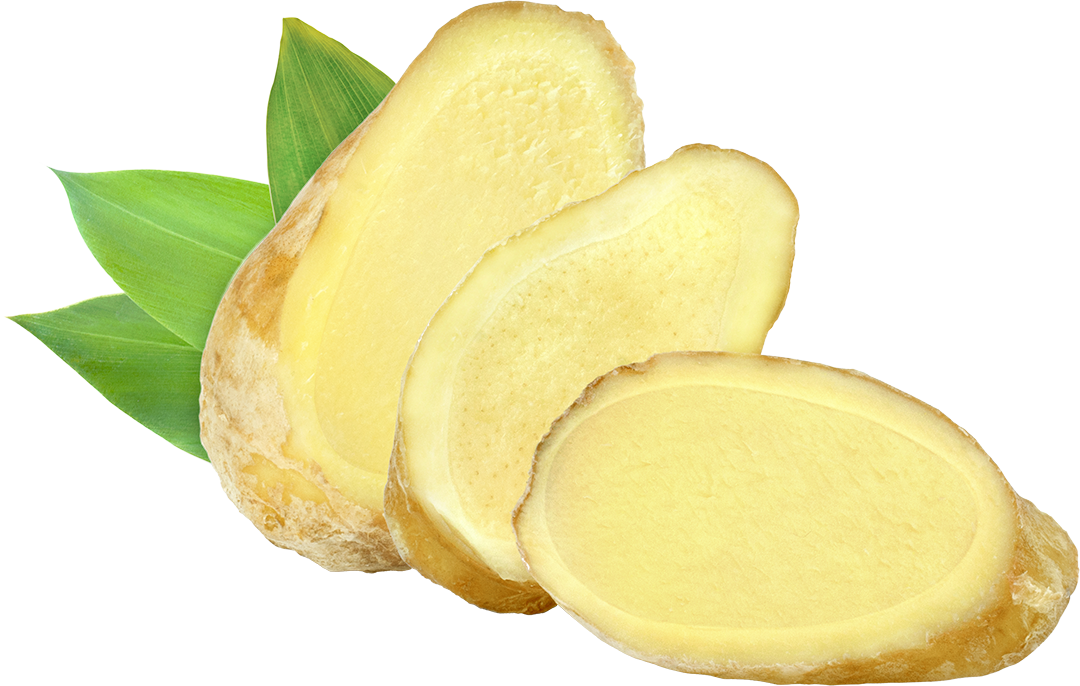
Antioxidant and free radical scavenger
Zingiber officinale
Zingiber officinale (ginger) is an antioxidant that scavenges free radicals. Numerous bioactive compounds have been identified in ginger, including phenolic and terpene. The phenolics are mainly gingerols and shogaols, which neutralize free radicals that damage hair follicles and strands. Polysaccharides, lipids, organic acids, are also present. By reducing oxidative stress, ginger prevents hair damage and breakage and contributes to stronger hair.
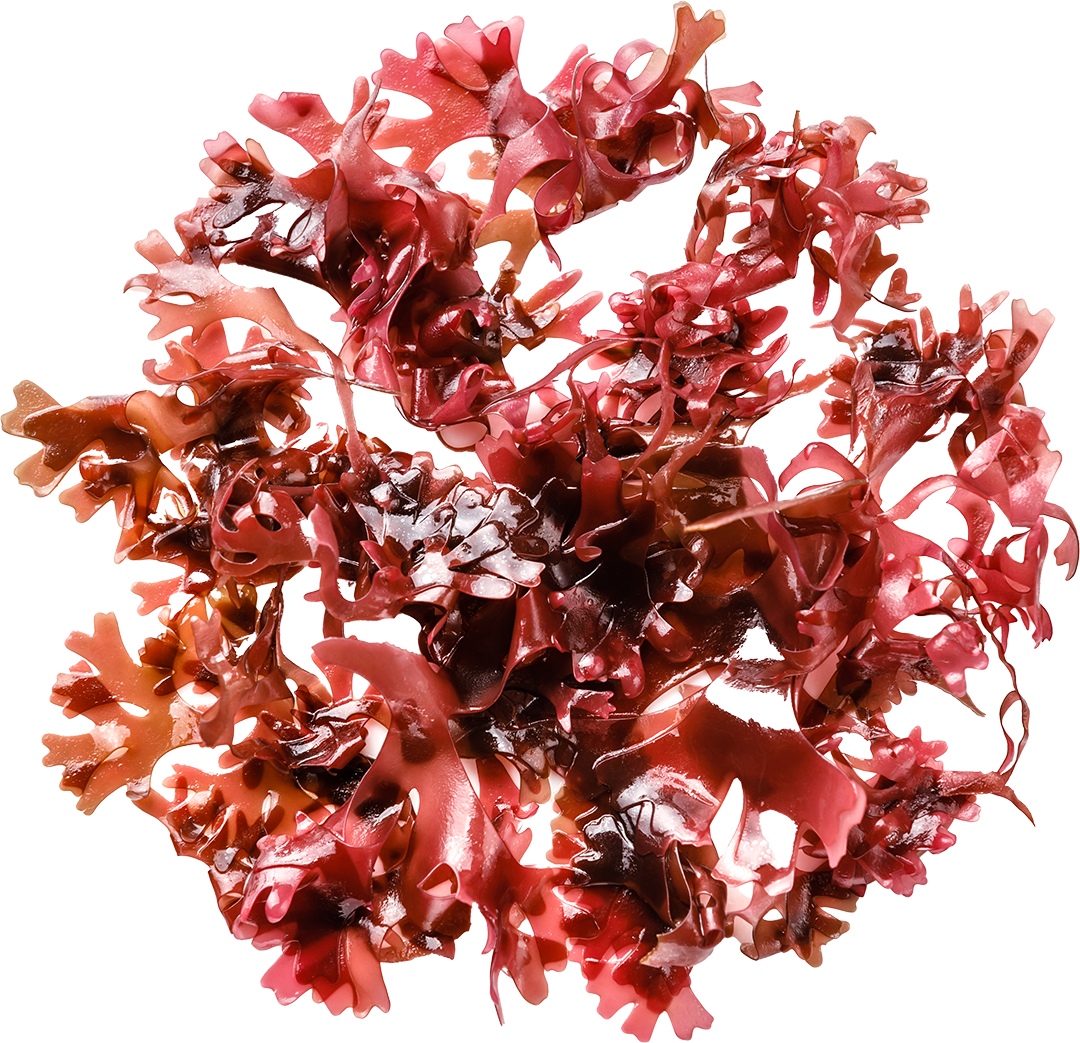
Coating agent and free radical scavenger
Kappaphycus alvarezii
Kappaphycus alvarezii, as a coating agent, can be defined as a natural shield for hair against the exposome. It forms a protective barrier on the hair shaft, shielding it from environmental stressors like pollution, UV radiation, and harsh chemicals. This barrier helps prevent damage and breakage, preserving the health and integrity of the hair. This protective film can also help strengthen hair, reducing breakage and split ends.
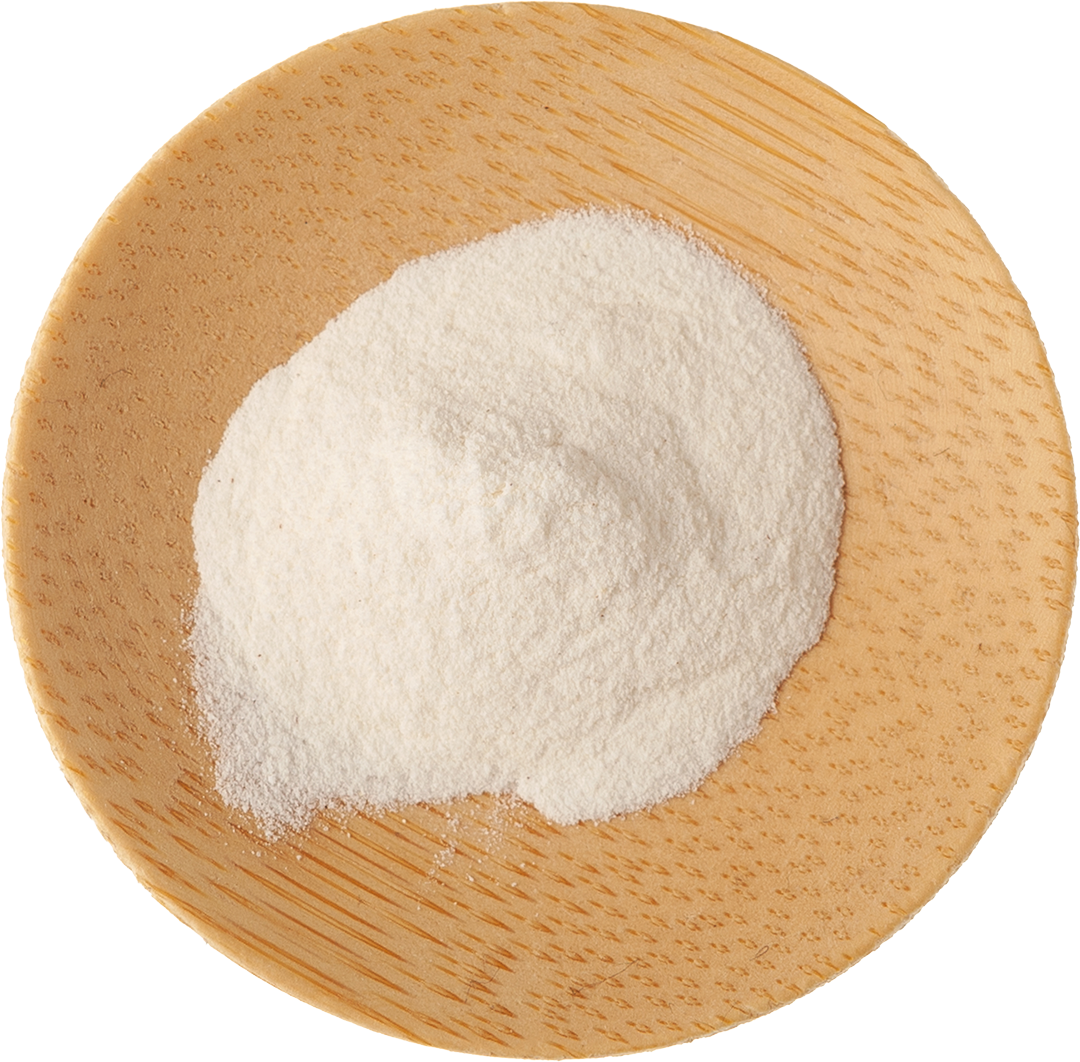
Chelation and coating agent
Sodium alginate
Sodium alginate acts as a chelation agent against hair exposomes by binding to heavy metals and other pollutants present in the environment, trapping them, and preventing them from interacting with the hair. By binding to pollutants, sodium alginate helps detoxify the hair, removing harmful substances that cause damage and dullness. The chelating action protects the hair from environmental stressors.
Hair cuticle shield
Upcycling
creating new ingredients of biomass waste
Assessa has developed a green process to extract valuable molecules from the industrial ginger waste of a juice factory.
Protocol 1
Exposome exposure
The Ci3000+, Fade-Ometer, and Q-Sun cham-bers simulated the hair exposome. By replicating sunlight, temperature, humidity, and moisture, these chambers accelerated the effects of environmental factors on hair, providing valuable insights into its resistance to damage. In these chambers, strands of natural Caucasian hair were subjected to wash cycles, treatments with products as described, and UV exposure cycles totaling 100 hours.
Gloss
Tests performed with glossmeter (BYK Gardner®) equipment
Shampoo + conditioner placebo + leave on placebo
Shampoo ZinBloq 1% + conditioner ZinBloq 1% + leave on ZinBloq 2%
Combability of wet hair
Tests carried out with instron 23-2S device (Bluehill 4.21 software)
Shampoo + conditioner placebo + leave on placebo
Shampoo ZinBloq 1% + conditioner ZinBloq 1% + leave on ZinBloq 2%
Combability of dry hair
Tests carried out with instron 23-2S device (Bluehill 4.21 software)
Shampoo + conditioner placebo + leave on placebo
Shampoo ZinBloq 1% + conditioner ZinBloq 1% + leave on ZinBloq 2%
Protocol 2
Exposome exposure
In chambers used to simulate the effects of sunlight and weathering, strands of natural Caucasian hair were subjected to wash cycles, treatments with products as described, and UV exposure cycles totaling 100 hours.
Diameter (capillary integrity)
Tests performed with micrometer
Treatment with spray leave on placebo and spray leave on ZinBloq 2%
Epicuticle protection
Tests performed by scanning electron microscopy
Treatment with spray leave on placebo and spray leave on ZinBloq 2%
F-layer protection
Tests performed with goniometer
Treatment with spray leave on placebo and spray leave on ZinBloq 2%
Protocol 3
Exposome exposure
(damaged hair)
In chambers used to simu-late the effects of sunlight and weathering, strands of damaged Caucasian hair were subjected to wash cycles, and treated with products as described, with UV exposure cycles totaling 100 hours.
DSC porosity
Tests performed by differential calorimetry scanning (DSC)
Treatment with spray leave on placebo and spray leave on ZinBloq 2%.
F-layer protection
Tests performed with goniometer
The hair’s contact angle determines its hydrophobicity, with a larger angle indicating a more intact cuticle.
Treatment with spray leave on placebo and spray leave on ZinBloq 2%.
Usage levels
| Product | (%) |
| Shampoo | 1 to 3 |
| Conditioner | 1 to 3 |
| Leave-on | 1 to 3 |
| Spray | 1 to 3 |

